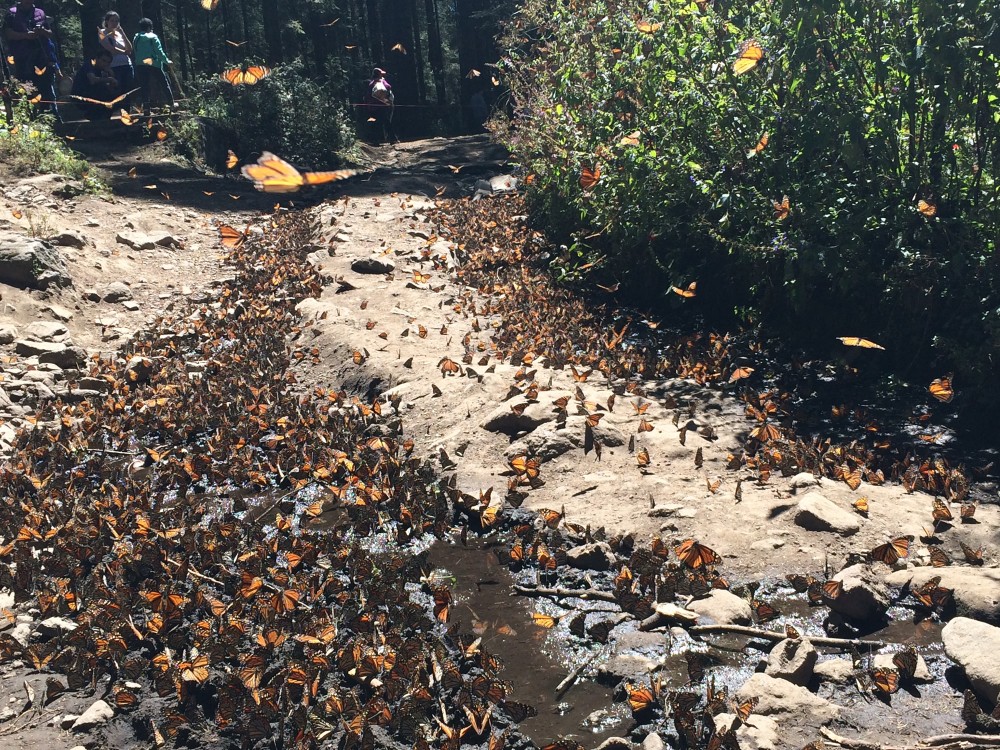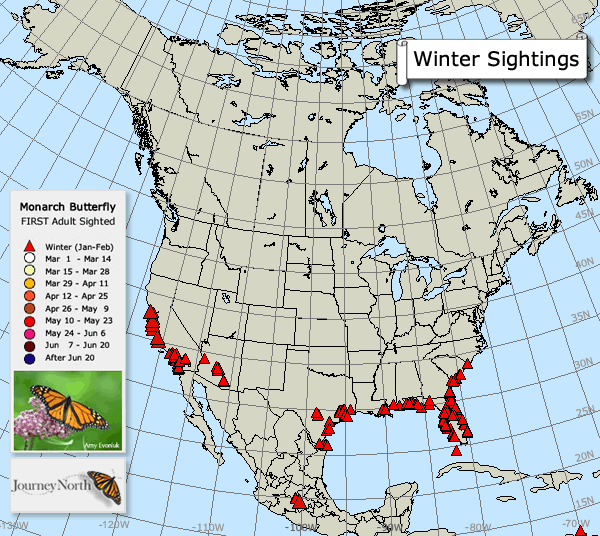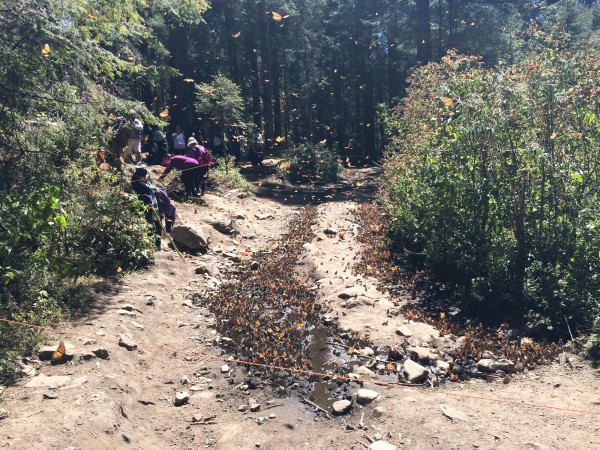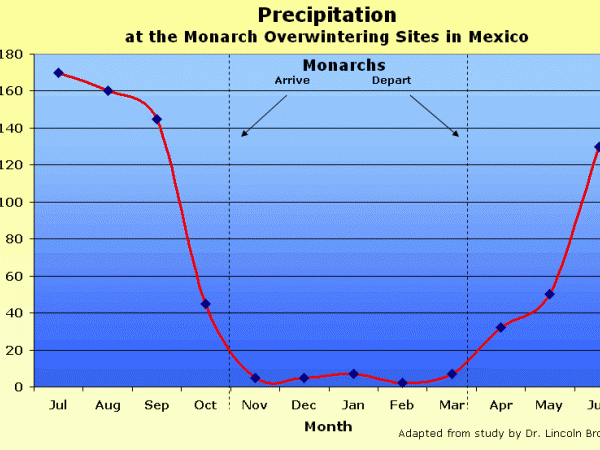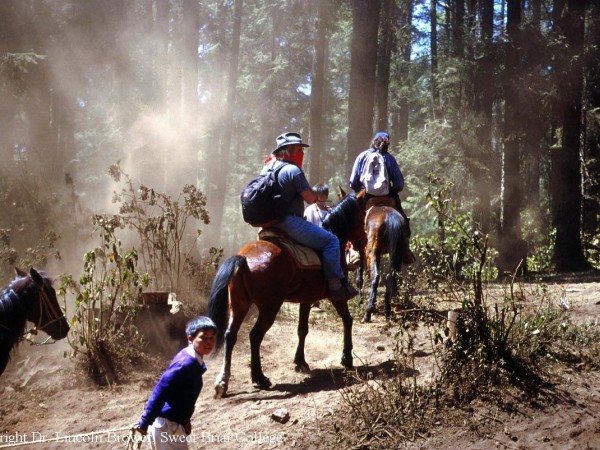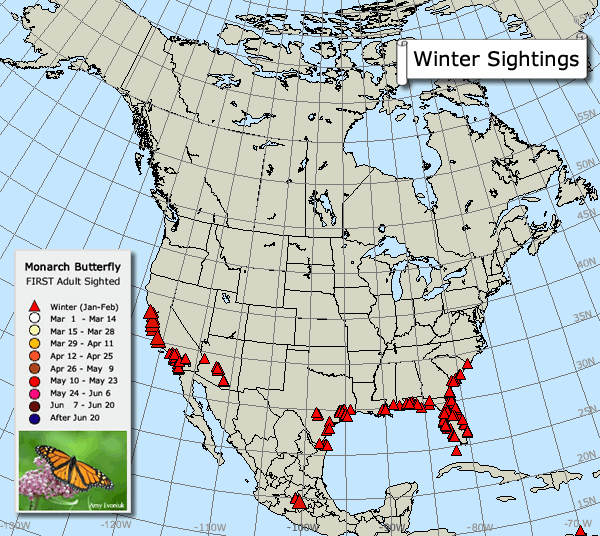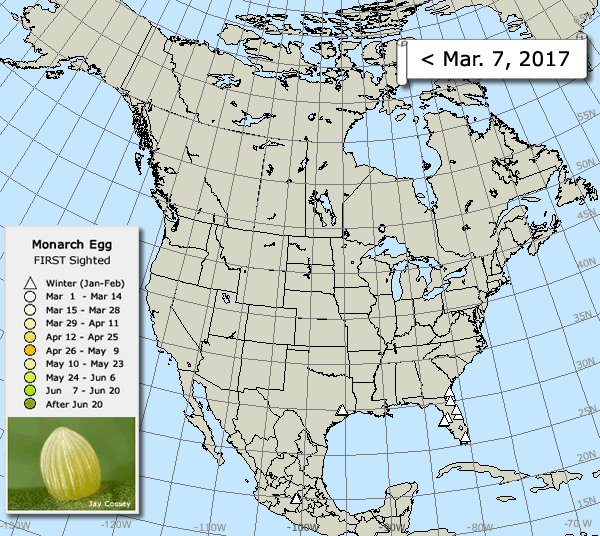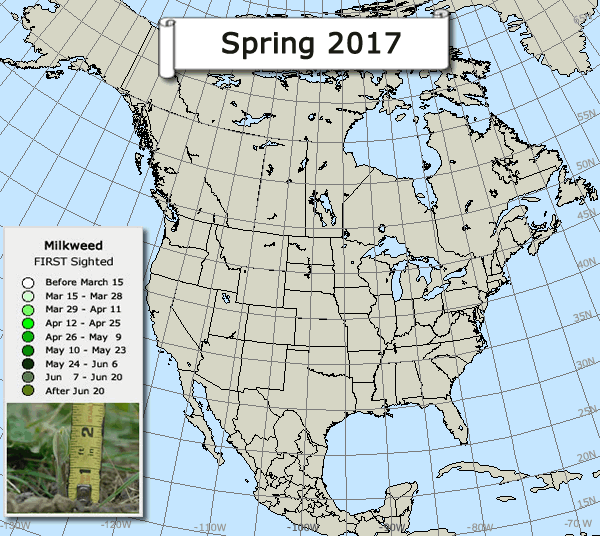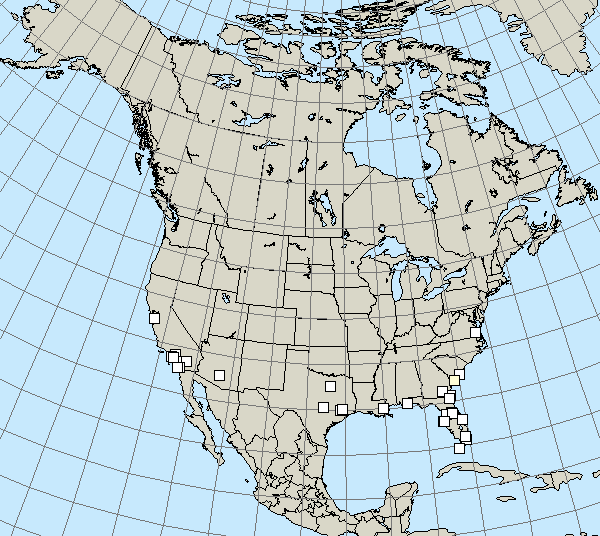Dry Habitat, Thirsty Butterflies
Colony Break-up
Moisture becomes critical at this point of the overwintering season. By March, the monarch's winter habitat is extremely dry. There's a flurry of activity now as thirsty monarchs break out of their clusters in search of water.
Estela Romero witnessed this change at El Rosario:
"The dryness of the soil is now very considerable. As you start making your way up the staircase at the sanctuary, monarchs suddenly start flying all around you, most rushing downway, most likely looking for water sources downhill.
"This weekend, maybe due to the high tourists' flow, guards have been assigned to protect stream areas alongside so that visitors are not disturbing such areas for monarchs to land and drink."
Traveling to Water
Monarchs move down the mountain into the lower portions of the watershed in search of seeps, drainages, arroyos and most any source of water they can find. Numbers inside the sanctuary dwindle, as fewer and fewer butterflies fly back up the mountain.
Dr. Lincoln Brower emphasizes the need for conservation outside of the sanctuary:
"It’s important to protect the entire watershed so monarchs can find moisture during the final critical weeks before spring migration."
March is Departure Month
As the end of the overwintering season rapidly approaches, important changes are taking place. Mass departure from the sanctuaries will occur from mid to late March, and early butterflies may already be departing.

